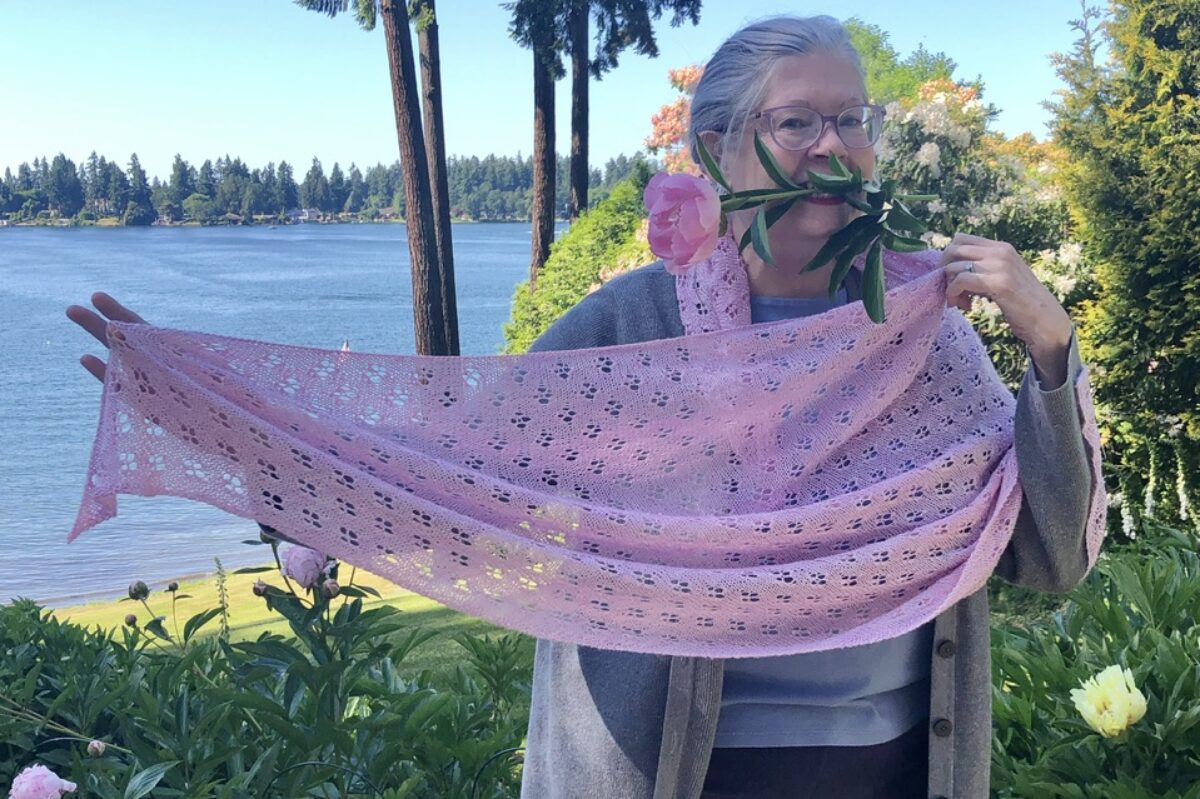Several weeks ago I received a copy of the Vogue Knitting book from the publisher, with a request to review the new edition*.
I also have the original version of this, published in 1989. Honestly, I haven’t used it much, but it was nice to have for comparison.
Much of the content of the new edition is similar. Overall, the text is much easier to read. All text, including chapter headings, is on a white background, with a bigger and cleaner font. The old edition had “tip boxes” with dark colored headings, so it was hard to read the text. Here is one comparison. The first photo is the from the old edition.
A lot of the text is similar, though cleaned up, and key points in the text throughout are in bold so are easier to find. Similarly, many photos and illustrations are the same, but are larger, and a lot of the swatch photos are either redone or lightened so stitch patterns are easier to see.
There is expanded information on new fibers and tools. There are 11 new cast ons shown. The sections on increases and decreases uses terminology that is much clearer, and matches current pattern writing.
There are brand new sections devoted to cable knitting, lace knitting, advanced techniques (brioche, double knitting), directional knitting (entrelac, center-out knitting), and new sections on designing shawls, hats, and hand and foot coverings. The cable and lace sections alone are worth the price of the book. It includes instruction on knitting from charts, as well as shaping in lace patterns.
The section on understanding knitting directions is expanded. There is more on gauge, and detailed sizing charts that are new. This section has one of the simplest explanations of darning that I’ve ever seen.
The section on circular and double point knitting includes expanded information on newer techniques: magic loop, the jogless join, Moebius knitting, and knitting with two circulars.
In the chapter on designing, the goofy wooden body models are gone.
Instead you get this:
The accompanying text has numbered descriptions of each of those measurements.
Other new features that I found include a more extensive discussion of short row shaping, including double stitch German short rows (Melanie Berg uses this in many of her shawl patterns). There are also updated shoulder and sleeve construction options.
There are a couple things from the old book that were left out. The introductory chapter on the history of knitting is gone. I doubt that anyone will miss it. The stitch dictionary is gone, but much of that info is now in the appropriate chapters on cables and lace. And the handful of very dated sweater patterns at the end of the book are gone. I’m quite certain that I’ll never get the itch to knit an oversized bulky sweater with reindeer on the front.
I probably wouldn’t have had this on my radar screen to go out and buy. There is so much useful information on the internet that I don’t haul out my knitting books much. This book is a great addition to any knitting library, and I anticipate that it won’t spend nearly as much time on the bookshelf as the old edition. I would highly recommend this one.
*In full disclosure, I received the review copy for free, but I’m not getting any other compensation for this.






I have the original and have been wondering if the new version is worth getting … apparently it is! Thanks for the review!
I miss the little wooden guys.
I wonder if the easier-to-read modifications were prompted by the aging population of Boomer knitters. My own pet peeve is the gray sans serif font that seems to be de rigueur for knitting books. There is too little contrast, which makes it hard to read in less than full daylight.